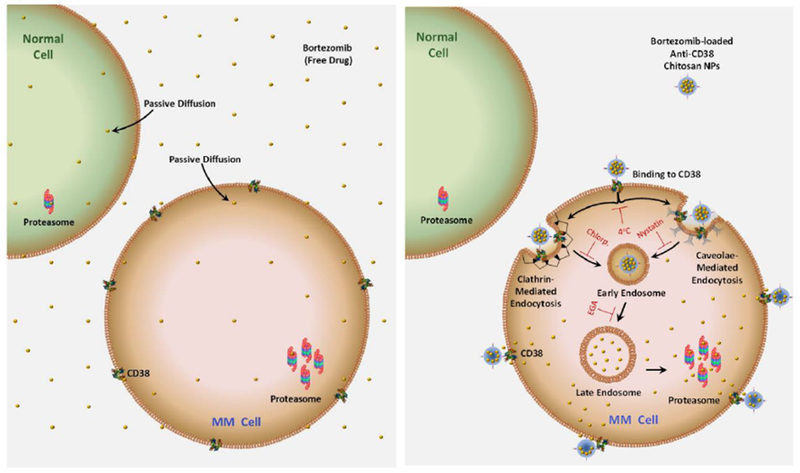Fig. 10:

Schematic representation of BTZ cellular uptake by normal and MM cells. (Left) Free BTZ penetrates into all cells by passive diffusion and preferentially inhibits the overexpressed proteasome in MM cells, even at a low drug concentration. (Right) BTZ-loaded anti-CD38 chitosan NPs bind to CD38+ MM cells, and BTZ can be released directly from the NPs attached to the surface or anti-CD38 NPs entered CD38+ MM cells via the endocytic pathway (inhibited by 4°C incubation). Clathrin- (inhibited by chlorpromazine, chlorp.), caveolae-mediated endocytosis (inhibited by nystatin) incorporated anti-CD38 chitosan NPs into early endosomes, which will be transformed into late endosomes (inhibited by EGA). Through both mechanisms BTZ is presented at a higher drug concentration to the proteasome based on higher availability of BTZ inside the cells through either diffusion from the anti-CD38 NPs that bind to the surface or the endocytosed anti-CD38 NPs.
